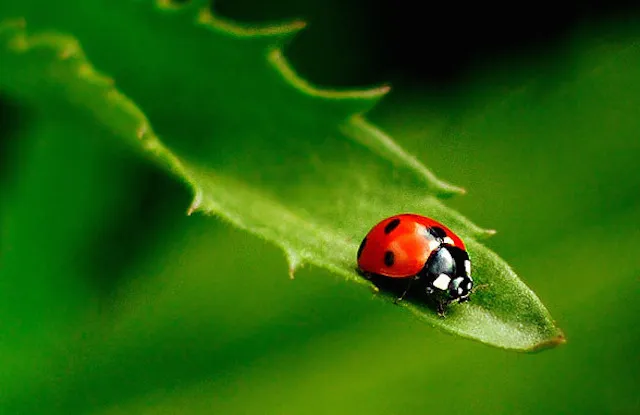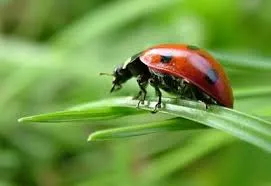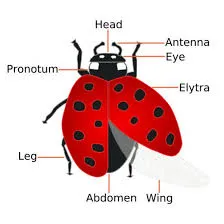It's hard not to like a ladybug. The round, splendidly hued bugs don't look startling and are great folks in the garden, with the two grown-ups and hatchlings eating creepy crawly bothers that mischief your plants. Around the world, there are in excess of 5,000 types of ladybugs that can be orange, red, dark, yellow or darker and with shifting quantities of spots on their wing covers. The ones you are probably going to see are red or orange, without spots or with up to 12 spots.
Indoor producers, while they do have a higher level of rejection than open air cultivators, can't dodge bothers getting into their ranches.
Insects will discover their way in under entryways and windows, through fans, and in the water.
Since most indoor developing situations share comparable characteristics – they keep running in a similar temperature extend, remain genuinely dry, and have ventilation – indoor cultivators over the world will manage generally similar bugs.
Most indoor cultivators battle with bothers like aphids, white flies, and insect vermin (among others). In the event that they've gotten their work done, they realize that it will take a blend of controls to deal with a bug populace.
Natural Control
The real preferred standpoint of ladybugs in the garden is to have a base populace that can react to hurtful bugs moving in. Utilizing regular adversaries for bug control as opposed to synthetic compounds is called organic control.
How Ladybugs Help The Garden
With the exception of a couple of herbivorous animal varieties that are known to make harm products, for example, maize, spinach, and soybeans, ladybugs are by and large safe, sustaining on little creepy crawlies that swarm the garden plants. Aphids are their most loved dinner, and that is the thing that makes them useful to planters. These delicate bodied bugs suck the plant juices, particularly from the tenderest sections of the plant, for example, the developing tips and creating buds, hindering development and influencing organic product set.
Ladybugs are unquenchable feeders, eating up 40-50 aphids every day. A solitary grown-up bug most likely eats around 5,000 creepy crawlies and bug hatchlings in its lifetime. Every female delivers around 1,000 eggs a season, which it lays near nourishment sources in clumps of 10's, 50's, or even 100's at once. That should give you a reasonable thought regarding their nuisance control potential, also what their posterity can do.
The hatchlings that incubate from the eggs don't look like the grown-ups and are regularly confused for destructive creepy crawly hatchlings and executed off by cultivators. They have a croc like appearance with a hunger to coordinate. They feed on 400-500 aphids amid the 2-3 weeks they before pupating and turning out as youthful scarabs in one more week or two. Aphids are not by any means the only prey of ladybugs and their hatchlings. The make short work of mealybugs, creepy crawly parasites, and the eggs and hatchlings of various bigger bug nuisances, for example, Colorado potato bug.
The whole lifecycle of a ladybug is finished in around 5 weeks or less, giving them plentiful time to bring forth 5-6 ages from spring to late-spring. Contingent upon their species, they aestivate in summer and sleep through winter, frequently meeting up in vast numbers.
how to attract ladybugs
There are expert types of ladybugs, each eating an alternate sort of plant bother, so support a scope of ladybugs to visit. Ladybugs supplement their savage eating routine with dust and nectar, so including plants with bottomless nectar pulls in ladybugs. U.S. Branch of Agriculture researchers found that ladybugs were more advantageous and progressively various when they had nectar in addition to prey to eat. Ladybugs frequently look for nectar from organs situated outside of blooms, for example, on plants of stone natural product trees (Prunus spp.), morning transcendence (Ipomoea spp.) and passionflowers (Passiflora spp.), and in blossoms, for example, dill (Anethum graveolens). Counting these plants differentiates your garden and anticipates extensive pervasions of bug species. Prunus spp. for the most part develop in U.S. Division of Agriculture plant toughness zones 3 through 9, and passionflowers for the most part develop USDA zones 5 through 11.
The most effective method to Attract Ladybugs To Your Garden
The nuisance control capability of ladybugs makes them an advantage in any garden. They are discovered everywhere throughout the nation in little and expansive numbers; be that as it may, they come and remain in your garden just if the conditions are correct. The accompanying measures may help draw in them into your garden and allure them to make it their home.
Maintain a strategic distance from compound splashing
Plant some aphid-inclined plants
Plant reasonable dust and nectar plants
Life Cycle of ladybugs
Since larval ladybugs don't look anything like grown-up ladybugs, you require recognize what they look like so you don't execute them unintentionally. Minimal prickly dark hatchlings incubate from orange eggs and experience four phases previously they are prepared to pupate. More seasoned hatchlings frequently have orange or white spots. They enigmatically look like little crocodiles and have a hunger to coordinate. One ladybug may eat around 5,000 aphids amid its life. The fourth larval frame changes into a pupa, and the grown-up rises around seven to 10 days after the fact. This is a case of what's known as total creepy crawly transformation, and ladybugs are a helpful path for youngsters to find out about this procedure.



